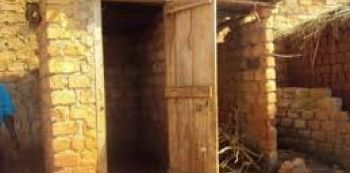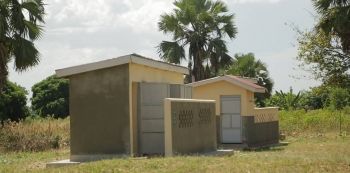
Police in Entebbe on Monday retrieved 13 corpses of revelers who are suspected to have drowned in Lake Victoria between Christmas Eve (December 24th and Boxing Day (December 26th).
Unofficial reports however indicate that about 50 people drowned at majorly four beaches including Sports Beach, Lido Beach, Spennah Beach and Aero Beach where they had gone to celebrate the Christmas holiday.
Entebbe International Airport police O/C Station Gloria Turinawe confirmed the incident.
However, by press time yesterday, 10 bodies had so far been identified and handed over to their relatives, while the three were yet to be identified.
“We call on those people whose relatives are missing to check with Mulago Hospital Mortuary,” Kampala Metropolitan Police spokesperson, Patrick Onyango, said.
He however shockingly revealed that only one reveler had been reported missing prior to police discovering the several drowned bodies.
“We got a report of only one person who went missing after he had gone to the beach with his friends. We discovered that he was one of the deceased,” Onyango said.
He identified some of the deceased as; Allan Mubiru, 17, a resident of Nateete, in Lubaga Division-Kampala, Abdu Ssensonyi, a resident of Kawempe, Kato Ssula, Brian Nsubuga, 22, a resident of Kayunga, Abdu Wakayiri, Richard Ssenyondo and Arafat Kaboyo.
Reports indicate that the bodies of the deceased were discovered by the beach patrol security personnel who saw them floating on the beach shores in the wee hours of the night on Boxing Day (Saturday) and in the early morning hours on Sunday and Monday.
“It is very unfortunate that those who had travelled to the beach to enjoy their Christmas have died. We’re going to hold a meeting with all beach operators to ensure that such incidents don’t happen again. We have to introduce strict laws to safeguard the lives of those who party in the lake,” Entebbe International Airport Police O/C Station, Gloria Turinawe stated.
BEACHES SEALED OFF
And following a meeting between police and the beach owners, the force yesterday sealed off three beaches in Entebbe as investigations into the shocking death that have been described as the worst water disaster during Christmas in the country, go on.
Police spokesperson, Fred Enanga, explained that the beaches were closed because they are currently being treated as crime scenes.
He however remained tight-lipped about when the beaches will be opened to the public, saying the release of the report will determine that.
By press time, Entebbe RDC Rose Kirabira had summoned owners of the various beaches and the Municipality officers for a crisis meeting aimed at scaling up security of revelers at the beaches.
WHAT KILLED THE REVELERS?
On Saturday, the Police and marines from the UPDF warned revelers to leave the water after weather conditions seemed to have changed as huge waves slapped the beach shores.
Some revelers who had been seen with alcohol in the water hesitated to leave the water.
CHAOS AT THE BEACH
Drunkenness
Police spokesperson Fred Enanga attributed the drowning of most of the deceased to drunkenness.
“Most of the deceased were drunk at the time they were in the water. However, a team comprised of Police Air Force at Entebbe, the Entebbe Municipal Council management and the CIID officers from Kibuli have commenced investigations into the tragedy. Our investigations will aim at establishing if the beaches were compliant with the set (safety) guidelines. Entebbe Municipal Council Management will help us find out whether these beaches were compliant with the set guidelines as per their licenses,” Enanga said.
It should be noted that severally, the media has published photos of beach revelers sipping on hard liquors while swimming.
And considering that alcohol makes one loose both energy and balance which are very vital in swimming, Enanga’s version could hold some water.
Meanwhile, eyewitness accounts show that indeed many revelers were swimming while drunk.
Chaos
Other unconfirmed reports have attributed the death of some of the revelers to chaos that ensued.
Reports show that as it got darker, police ordered people at some of the affected beaches to quit the waters in vain.
It is said that thugs including rape gangs took advantage of this darkness to push victims to the deep ends of the lake where they abandoned them either after raping them or out of frustration for failing to do so. “Those who could not swim back to safety drowned,” an eyewitness said.
“Our officers urged people to get out of the water when it exceeded time but this can’t be a reason for the death of these people. You must understand that police was all along available at the different beaches,” Enanga said in a statement that confirms the darkness rumors.
Coupled with this, police arrested many thugs on charges ranging from theft and assault of revelers.
Seiche occurrence
Police reports also indicate that on Saturday, the Police and marines from the UPDF warned revelers to leave the water after weather conditions seemed to have changed but some revelers who had been seen with alcohol in the water refused to heed the orders.
Reports show that at that particular time, ‘huge waves were slapping the beach shores’.
However, our geology experts have attributed that scenario to a possible occurrence of a Seiche— also known as inland tidal wave.
A seiche is a standing wave oscillating in a body of water.
Although similar to a tsunami, a seiche mostly occurs on an inland lake (like Lake Victoria).
Seiches are typically caused when strong winds and rapid changes in atmospheric pressure push water from one end of a body of water to the other.
When the wind stops, the water rebounds to the other side of the enclosed area.
The water then continues to oscillate back and forth for hours or even days.
In a similar fashion, earthquakes, tsunamis, or severe storm fronts may also cause seiches along lakes.
Internationally, Lake Erie is known for seiches, especially when strong winds blow from southwest to northeast. In 1844, a 22-foot seiche breached a 14-foot-high sea wall killing 78 people and damming the ice to the extent that Niagara Falls temporarily stopped flowing.
As recently as 2008, strong winds created waves 12 to 16 feet high in Lake Erie, leading to flooding near Buffalo, New York.
In some of the Great Lakes and other large bodies of water, the time period between the “high” and “low” of a seiche can be as much as four to seven hours.
This is very similar to the time period between a high and low tide in the oceans, and is often mistaken as a tide. Records show that an officially recorded seiche last happened on Lake Victoria in 1957.
Comments (0)
📌 By commenting, you agree to follow these rules. Let’s keep HowweBiz a safe and vibrant place for music lovers!












